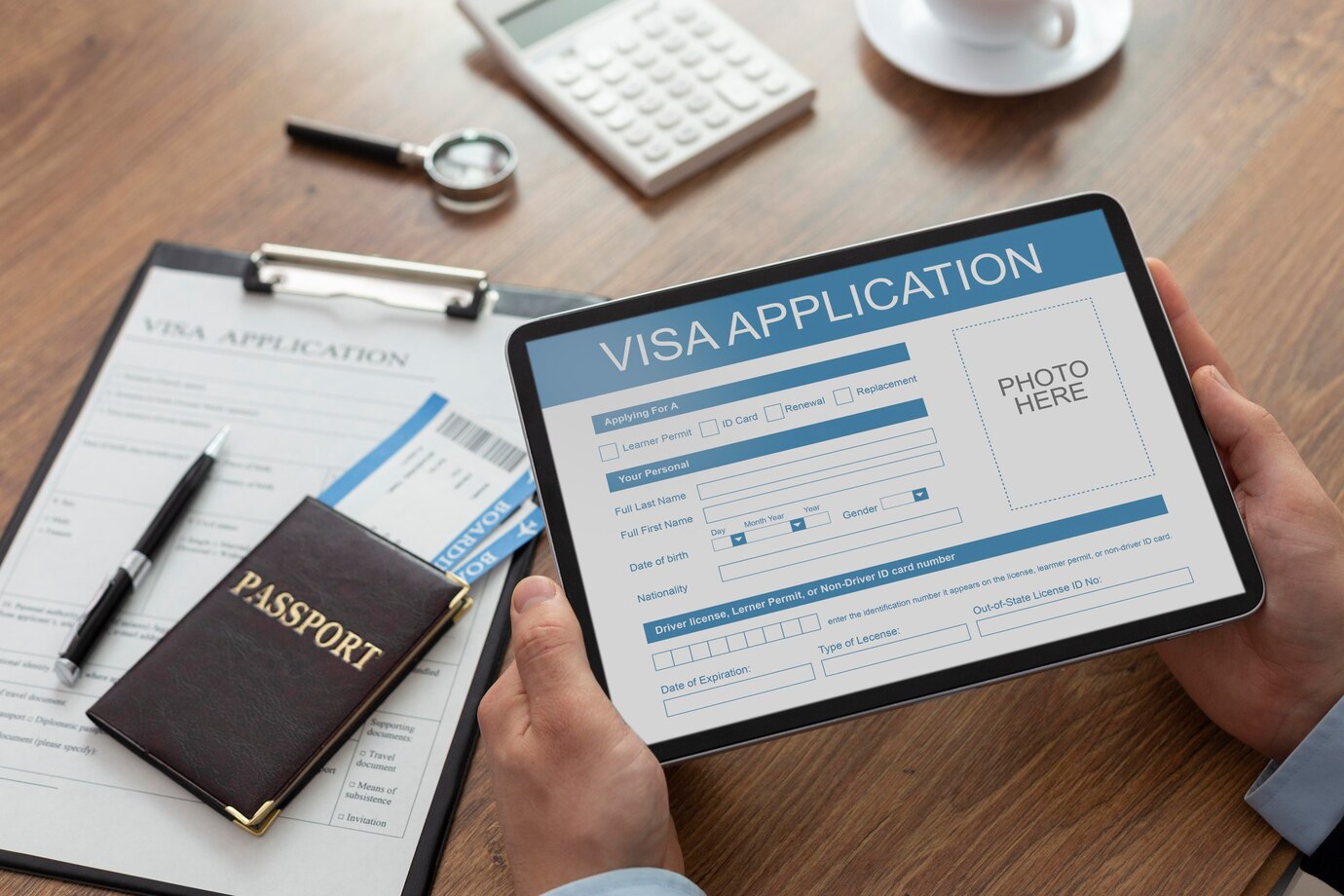Obtaining a visa is a crucial step for stepping across international borders, and a seemingly small detail can hold immense power – your photograph. While visa requirements vary across countries, mastering the photography basics equips you to tackle any application with confidence. This article demystifies the essential elements of visa-compliant photos, from understanding lighting and background specifications to navigating facial expressions and attire regulations. Armed with this knowledge, you can present yourself professionally and enhance your chances of visa approval, paving the way for an enriching intercultural experience.
General Information about Visa Photo Requirements
The significance of visa photos in the application process cannot be overstated. These photographs play a crucial role in verifying the identity of applicants and ensuring the security of the visa issuance process. The image captured serves as a visual representation of the individual applying for the visa, making it imperative that certain standards and requirements are met.
- Across the globe, there exist widely accepted international standards for visa photos. These standards encompass specific dimensions, background color preferences, and facial expression norms. While these requirements may seem meticulous, they are in place to standardize the identification process and maintain consistency in visa documentation worldwide.
- Beyond the technical specifications, there are legal and ethical considerations associated with visa photo submissions. Compliance with these requirements is not merely a matter of procedure; it is a legal obligation. Failure to adhere to stipulated photo guidelines may result in the rejection of the visa application. Understanding and abiding by these regulations is fundamental to a successful visa application process, underscoring the importance of attention to detail.
In essence, the first step in preparing for a visa application is to grasp the gravity of visa photo requirements. Recognizing the role these photos play in the verification process and understanding the global standards, legal obligations, and ethical considerations associated with them lay the foundation for a meticulously prepared visa application.
Understanding the Specifics of Visa Photos
Visa photos are not a one-size-fits-all affair; they vary depending on the type of visa one is applying for. Different visa categories come with unique requirements, necessitating a nuanced understanding of the specifics associated with each. For instance, a work visa may have different photo criteria compared to a tourist or student visa. Applicants must familiarize themselves with the distinct requirements relevant to their specific visa category.
Beyond categorization, visa photo composition guidelines delve into the finer details of how an applicant should present themselves visually. This includes considerations such as facial positioning, framing, and clothing choices. The importance of adhering to these guidelines cannot be overstressed, as any deviation may lead to complications during the application process.
Cultural sensitivity is another dimension of visa photo specifics. Different cultures may have distinct norms regarding attire, appearance, and facial expressions. It is incumbent upon the applicant to be aware of and respect these cultural nuances. Failure to do so may not only affect the application process but could also lead to misunderstandings and unintended cultural insensitivity.
In essence, understanding the specifics of visa photos goes beyond a cursory acknowledgment of general requirements. It involves a meticulous exploration of the unique criteria associated with the intended visa category, a keen awareness of composition guidelines, and a respectful consideration of cultural nuances. Only through such a comprehensive understanding can applicants ensure that their visa photos align with the specific expectations of the immigration authorities processing their applications.
Organizing a Photo Shoot
Preparing for a visa application involves not only understanding the intricacies of photo requirements but also actively engaging in the process of capturing suitable images. Whether opting for a professional photographer or choosing the do-it-yourself (DIY) route, organizing a photo shoot requires careful planning and attention to detail.
Professional vs. DIY:
- Professional Photography: Hiring a professional photographer offers the advantage of expertise and experience in adhering to visa photo requirements. Professionals are equipped with high-quality cameras and lighting, ensuring optimal conditions for capturing precise and compliant images. It may be a preferred option for individuals seeking a polished and professionally presented visa application.
- DIY Approach: Opting for a DIY approach provides flexibility in terms of time and location. DIY can be more cost-effective, especially for applicants on a tight budget. It requires careful consideration of technical aspects to ensure compliance with international standards.
Setting up the Scene:
- Location and Background: Choose a well-lit and neutral background to eliminate distractions and focus on the applicant’s facial features. Consider whether the chosen location aligns with the cultural and environmental expectations associated with the visa application.
- Lighting Conditions: Ensure adequate lighting to avoid shadows or uneven exposure. Natural light is preferable, but if using artificial lighting, position it strategically to illuminate the face evenly.
Posing and Expression:
- Neutral Facial Expression: Instruct the applicant to maintain a neutral facial expression, with eyes open and mouth closed. Avoid smiling, frowning, or displaying any exaggerated expressions.
- Clothing Choices: Advise on wearing clothing that adheres to visa photo guidelines, typically favoring neutral colors and avoiding patterns. Ensure the clothing does not obstruct the face or violate any specific visa category requirements.
Organizing a photo shoot involves navigating the decision between professional and DIY approaches, careful consideration of the location and background, and meticulous attention to lighting conditions, posing, and expression. To facilitate this process, the following table outlines key considerations:
| Aspect | Professional Photography | DIY Approach |
| Expertise | Benefits from professional expertise | Requires careful adherence to guidelines |
| Equipment | High-quality cameras and lighting | Utilizes personal or consumer-grade equipment |
| Flexibility | May have scheduling constraints | Offers flexibility in time and location |
| Cost | Typically more expensive | Can be more cost-effective |
| Control | Limited control over the process | Full control over the photo shoot |
Technical Aspects of Visa Photos
The technical aspects of visa photos are critical elements that contribute to the overall compliance and acceptability of the images submitted with a visa application. Understanding and meticulously addressing these technical considerations can significantly enhance the likelihood of a successful visa application.
- Resolution and Image Quality: Ensuring high resolution and image quality is paramount in visa photo preparation. Low-resolution images or those with poor quality can lead to difficulties in facial recognition and may result in the rejection of the application. It is advisable to use a camera with sufficient megapixels to capture clear and detailed images. Attention to detail during the editing process is crucial to avoid issues such as blurriness, pixelation, or distortion.
- Image Format and Size: Adherence to the prescribed image format and size specifications is non-negotiable. Different countries and visa offices may have specific requirements, often detailing the acceptable file formats (e.g., JPEG, PNG) and dimensions. Applicants must familiarize themselves with these specifications and ensure their photos meet the criteria to prevent unnecessary delays or rejections.
- Retouching and Alterations: While it is common for individuals to enhance personal photos for aesthetic reasons, visa photos demand a level of authenticity and accuracy. Excessive retouching, digital alterations, or manipulation of facial features are generally discouraged. Minor adjustments to correct lighting or color balance are acceptable, but any changes that significantly alter the appearance of the individual can lead to complications during the application process.
In summary, the technical aspects of visa photos revolve around resolution, image quality, format, and permissible alterations. Applicants must use equipment capable of capturing high-quality images, adhere to specified formats and sizes, and exercise caution when retouching photos. Ignoring these technical considerations can jeopardize the acceptance of visa photos, potentially resulting in delays or denials in the application process.

